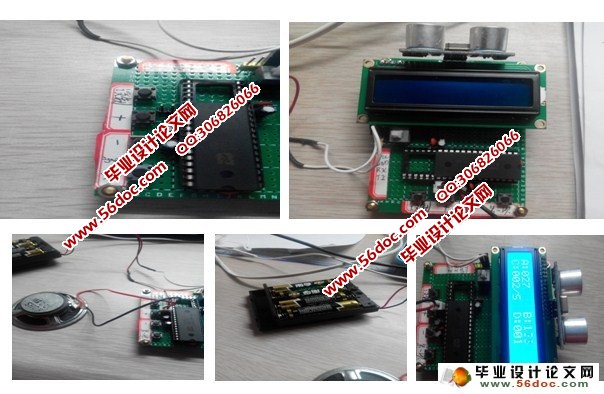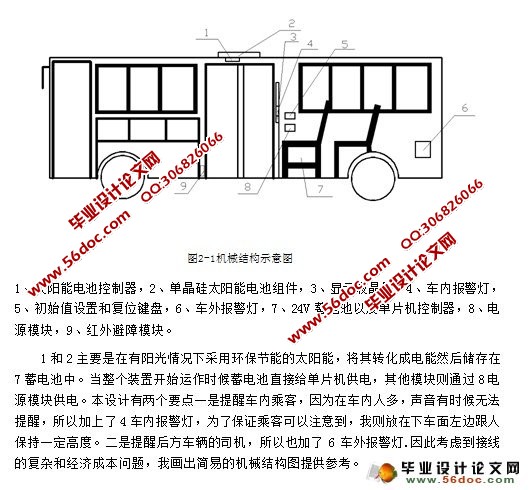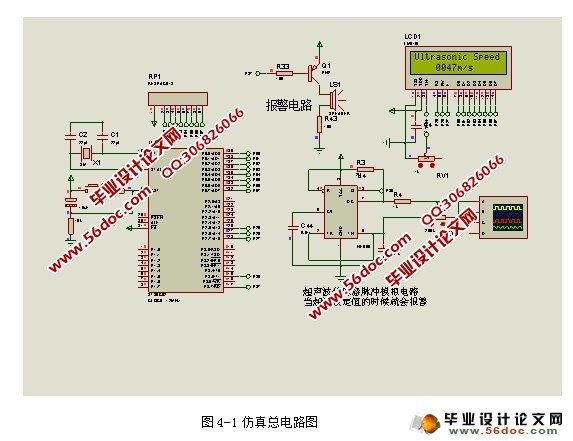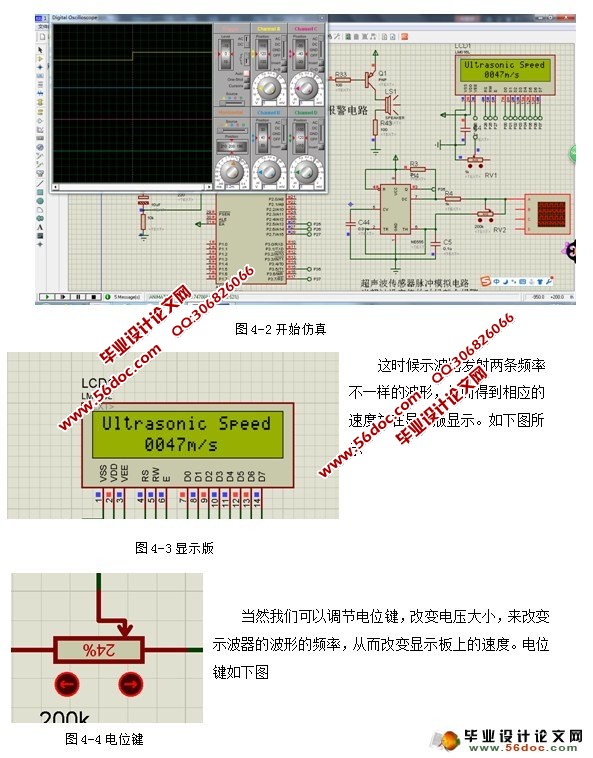基于STC89C52单片机的公交车乘客下车安全检测系统(C语言)(含录像)(任务书,开题报告,论文说明书8000字,protues仿真,答辩PPT)
摘要
木文详细介绍了一种“基于STC89C52单片机的公交车乘客下车安全检测系统”该系统是以空气中超声波的传播速度为确定条件,利用两次不同时间发射超声波与反射回波时间差来测量待测物体的速度。也就是我们所认识的时差法。有效解决了由于视线的遮挡导致无法得知后方有移动物体过来,从而受伤。本系统安装和使用很方便,价格比较便宜,并可与红外接近开关配合的使用,因此有较广阔的应用前景。论文概述了:超声波检测的目的与意义,介绍了超声传感器的工作机理及特性,介绍了STC89C52单片机的情况,并且进行了仿真模拟,以及实物的制作与调试。
关键词: 时差法; STC89C52 ;超声波检测系统
Abstract
This paper introduces a C52 MCU bus passengers safety detection System on the system is empty Gas ultrasonic propagation velocity to determine conditions, using two different time of ultrasonic transmitting and echo time difference to measure the velocity of an object. That is our understanding of the time difference method.To effectively solve the block line of sight to the rear over that moving objects, thus the injured. This system is convenient to install and use, cheap price, and can be matched with infrared proximity switch, and it has broad application prospects. This paper outlines the purpose and significance of the ultrasonic detection, and introduces the working principle and characteristics of ultrasonic sensor, STC89C52 MCU was introduced, and the simulation is conducted, and the manufacture and debugging of real.
Keywords: STC89C52; time difference method; ultrasonic detection system
目录
摘要 I
Abstract II
第一章引言 - 1 -
1.1本设计的背景和意义 - 1 -
1.2本设计所采用的方法的确定 - 1 -
1.2.1各类车的安全车速调查 - 1 -
1.2.2测量方法的选择 - 2 -
第二章检测系统硬件部分 - 4 -
2.1机械结构设计 - 4 -
2.2.1总电路原理图 - 4 -
2.2.2 STC89C52单片机引脚说明 - 5 -
2.4显示模块 - 9 -
2.5报警模块 - 9 -
2.6超声波模块设计 - 10 -
第三章检测系统软件部分 - 11 -
3.1报警器部分流程图 - 11 -
3.2超声波测速流程图 - 12 -
第四章Proteus仿真 - 13 -
4.1仿真模型的建立 - 13 -
4.2仿真结果分析 - 15 -
第五章系统试制与调试 - 16 -
5.1系统功能分析 - 16 -
5.2 系统误差分析 - 16 -
5.3实物 - 16 -
第六章总结 - 18 -
参考文献 - 19 -
致谢 - 20 -
附录 - 21 -
|









